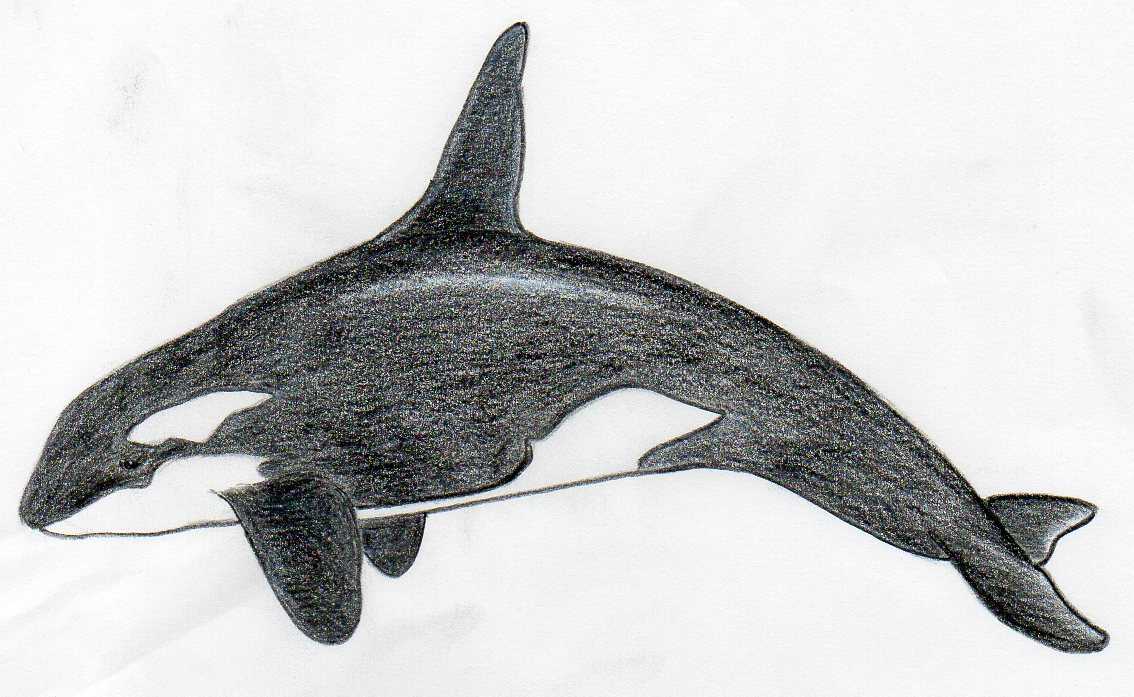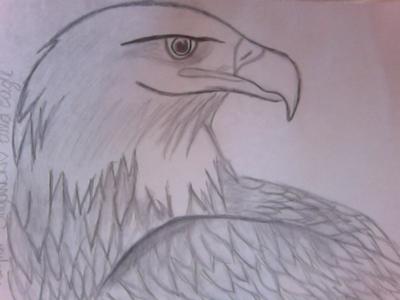How to Draw Horse Head
To draw horse head traditionally belongs among the most popular animal-related themes. The horse head looks deceptively simple.
In fact, it is, but it requires a little delicate and careful shading.
I will show you a very simple process.
You’ll understand that capturing a “so-so” accurate basic sketch of a horse head is not as difficult as you may have imagined before.
Whether you draw from a photo, or a live animal, whatever works for you is OK, but please observe carefully first every possible detail.
It is important to draw a horse's head in your mind, first.
I purposely put more steps than necessary to make clear how the coloring and shading develop.
Please make your drawing better than mine!
Draw Horse Head Step By Step
Before you begin to draw the horse head, first only in your mind, draw the imaginary contours of the head.
It should look something like this “potato” or “noodle”.
By capturing this first basic outline as accurately as possible, your remaining work is going to be very easy.
From now on you’ll proceed pretty fast because you already got right the most important basic head proportion.
Draw the ears and outline the nostrils and the eyes. Do not hurry here, rather slowly but precisely is the best way.
Sketch the rest of the visible part of the horse’s body. Outline the upper rail of the wooden round log horse fence and the headgear.
The idea to draw a horse head with part of the fence simply looks more natural.
Outline the approximate details on the headgear. A well-sharpened pencil will be very helpful here.
Refine the basic outline contours. Correct where you feel necessary so that you’ll get a perfect horse head template you can use anytime later if necessary.
By light brown color pencil, outline - in one single line - the horse head as you see on the picture.
Erase the initial graphite pencil “noise” so that you’ll get a single clear contour.
I recommend using a kneaded eraser instead of a common plastic eraser.
Using the kneaded eraser, no friction occurs between the paper and eraser because you erase by touching – stamping the paper by eraser.
If you do not have kneaded eraser handy, you can of course use an ordinary plastic eraser but get one as soon as possible. It really helps a lot.
Color the head and the rest of the body in one single flat color. No shading yet.
Shading
Continue to draw the horse head as you see in the picture, using the same light brown color pencil.
Observe well the original object (photo, picture, or a live animal). Notice where the color is dark brown – almost looks like black (inner part of the ears).
If you did not capture well the shape of the muzzle (the area of nose and lips), do it now.
Leave the headgear blank. Coloring the headgear will be one of the last steps.
Take a dark brown color pencil and start to shade the darker parts on the head.
You’ll also need a black pencil from now on.
Do not use a graphite pencil to darken the drawing.
Graphite shines and will destroy color pencil drawing if mixed.
If possible, always make the pencil strokes in the direction of fur growth. It will look three-dimensional and more realistic.
When you draw a horse head, always make a basic flat coloring (light brown) first on which you will further develop (shade) other darker color tones.
By doing so, you’ll have control over the shading process. You’ll be able to easily notice errors and correct them in time.
Add – shade - further the darker parts. Especially the muzzle, nostrils, and the inner area of the ears.
I know, each step may look like a lot of work. It is. I intentionally upload this picture too, so that you can see even better how the shading develops in small steps.
If you draw a horse head, and you really want to be satisfied with your work, it is good if you take your time and work out the minimum necessary details.
The moment of truth. Let’s color the eyes. You’ll need dark blue and a black color pencil.
If you are not sure, please practice first on a separate paper. By coloring the eyes your horse instantly gets a facial expression. It is as if you give it life.
Before you begin, sharpen your pencils (black and blue). You’ll have better control over the eye drawing if your pencil is sharper. The blue color in the eyes is very weak almost invisible.
Now you can begin to add color to the headgear. Choose whatever color you like, but choose a different color tone than the color of the head itself.
You may ask “when I draw a horse head, do I need to draw this headgear?”. The answer is: “no”. It is an option.
You may erase it completely and draw the picture without it. You can still erase it if you do not feel like drawing it. Add a basic light brown color to the horse fence.
Work out the wooden surface of the upper rail on the horse fence and add the shade.
Here, you can draw a landscape behind the horse or simply leave the drawing as it is.
The reason I did not draw anything behind the animal is that the shape of the horse head is better visible on the white background so that you can draw the horse head better and draw it quickly.
I encourage you to add some landscape behind; even the simple grass and blue sky would make all the difference.
And remember; always make your drawing better than mine ;-)
Did You Enjoy Drawing Horse Head?
Check Out Also These Animal Drawing Tutorials:
Visitors’ Personal Gallery Pages
Enjoy the collection of personal galleries below.
Observing others’ artwork is always inspiring and might spark new ideas for your own creations.
We believe you’ll have a lot of fun exploring these pages!
|
| |||
Theme Based Visitors Galleries
The following Theme Based Galleries are a collection of selected drawings from various authors based on a certain theme. I would like you to get as much inspiration as possible for your own drawings.
SHARE YOUR DRAWINGS
Select The Category and Follow The Uploading Instructions
Share your own drawings, sketches or doodles by choosing a suitable
category below. You will be guided to the uploading process step by
step.
Latest Visitor's Drawings
-
Evolution of Humans
Dec 29, 24 07:43 PM
Evolution of Humans -
Life is a puzzle
Dec 24, 24 08:13 AM
Life is a puzzle. -
Mollie Brennan and her little sister grown up
Dec 24, 24 08:12 AM
This is my drawing of British girls Mollie Brennan and Debbie Brennan on Microsoft Paint. Debbie is now 14 years old and is ready to commence her life -
Destiny controls our life and times
Dec 24, 24 08:12 AM
Destiny controls our life and times. -
You got mail
Dec 13, 24 05:52 PM
I really been enjoying trying new things. This is acrylic paint on an old saw blade. I have not posted in a while so I will be sharing more soon -
Imaginary pen art completed
Dec 12, 24 05:44 AM
As for handleterring of NATURE and the decor,brillant pens were used.And it is good for this style.So here is an imaginary pens art and as usual,dominated -
Still in progress
Dec 08, 24 05:25 AM
Ballpoint pens art. Imaginary. -
Respect others for self-protection...
Dec 07, 24 07:59 PM
Respect others for self-protection... -
Thieves are always punished
Dec 07, 24 07:57 PM
Thieves are always punished. -
carnivorous plant
Nov 25, 24 08:02 AM
carnivorous plant -
Imaginary pens art in progress
Nov 25, 24 07:59 AM
Dominated by colourful nature and focus on details. -
Chateau Trompette in Mauritius
Nov 25, 24 07:57 AM
Maybe this colonial mansion is not known to many, in Mauritius. Or maybe of all those who saw it, very few are aware that it is known as Chateau Trompette. -
Understand your own value
Nov 25, 24 07:55 AM
Understand your own value -
Be your own hero
Nov 09, 24 07:00 AM
Be your own hero. -
Place of tranquility
Nov 03, 24 04:00 AM
Imaginary pens art. Normal ball pens were used except for yellow colour done with a gel ink one. A place of tranquility dominated by nature. Even if in








































































































